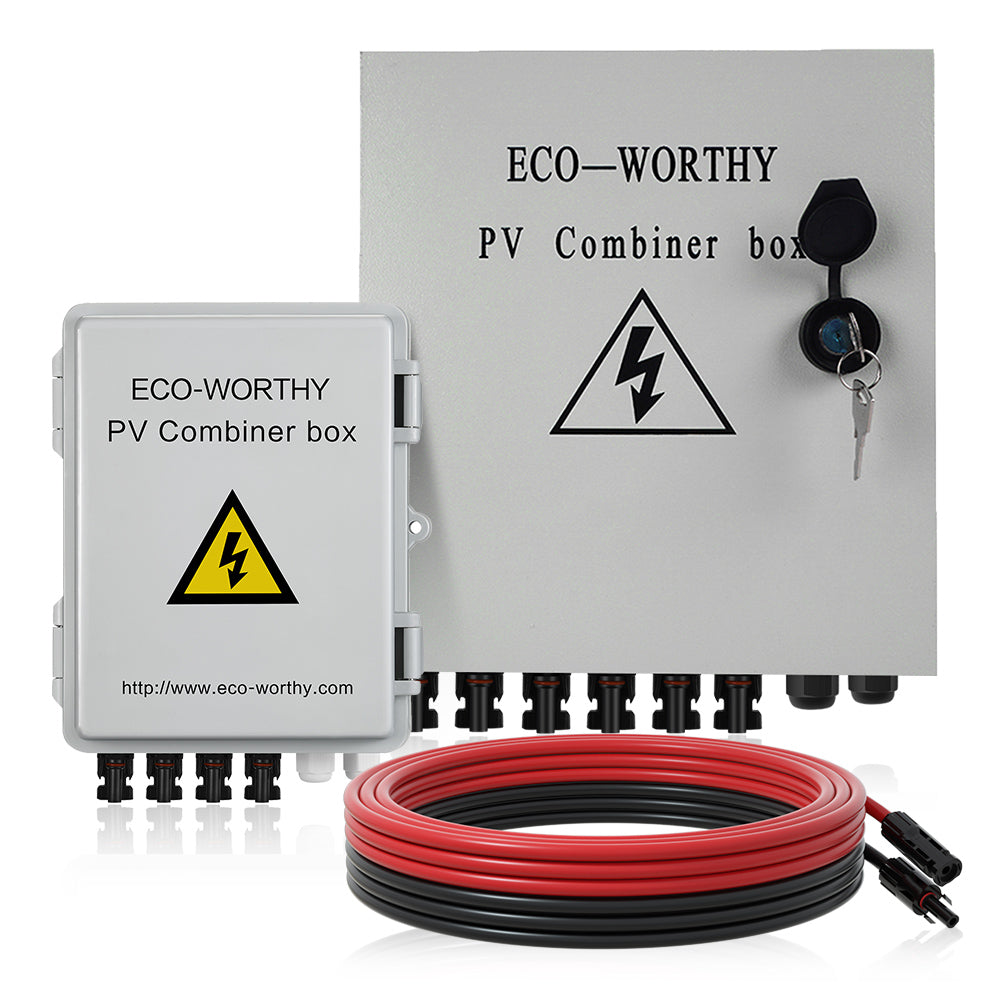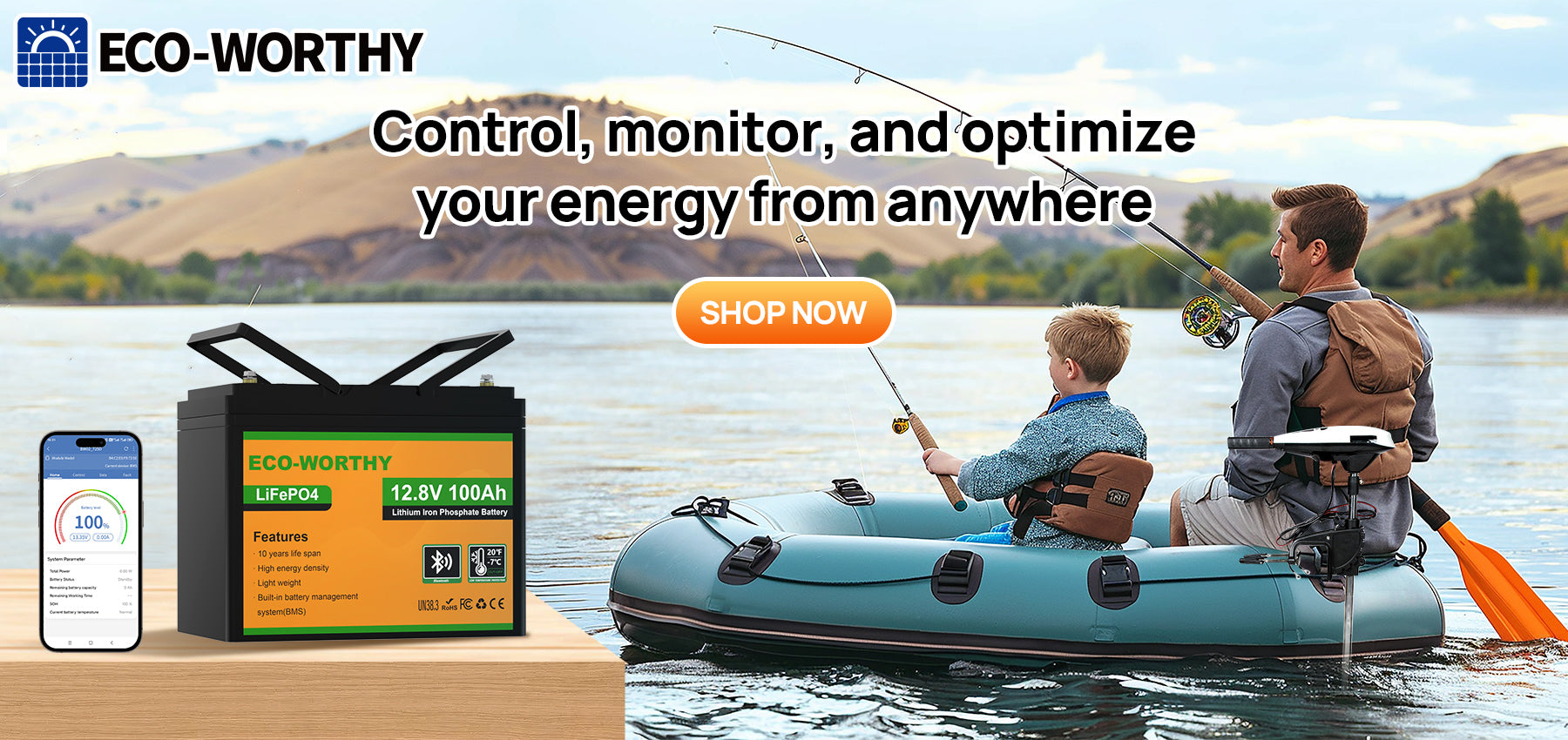Solar panels are becoming increasingly popular as a sustainable energy solution for households and businesses. These panels harness the power of the sun to generate electricity, reducing reliance on traditional power sources and minimizing the carbon footprint. With the wide variety of solar panel options available in the market, it can be overwhelming to choose the right one for your energy needs. In this article, we will explore the different types of solar panels available, with a focus on the Eco-Worthy Solar Panel, a leading brand in the industry.
What is a Solar Panel?
A solar panel, also known as a photovoltaic (PV) module, is a device that converts sunlight into electricity using photovoltaic cells. These cells are made up of semiconductor materials, such as silicon, which absorbs photons and releases electrons, generating an electric current. The efficiency and performance largely depend on the type of materials used and the technology behind it.
5 Main Types of Solar Panels
1. Monocrystalline Solar Panels
Monocrystalline panels are known for their high efficiency and sleek appearance. These panels are made of single-crystal silicon and have a uniform black color. The manufacturing process involves growing a single crystal structure, which allows for greater electron mobility and higher efficiency. These are highly efficient and perform well in low-light conditions, making them an ideal choice for residential and commercial installations.
The Eco-Worthy Monocrystalline Panels, in particular, are renowned for their durability and superior performance. ECO-WORTHY solar panels are made of monocrystalline solar cells. The solar module efficiency is up to 21%, with a solid surface and sealed edges. Furthermore, the panels are weather-resistant and waterproof, suitable for various uses, such as RVs, homes, cabins, etc.
Compared with monofacial solar panels, we also have Bifacial Monocrystalline Solar Panels (100w/120w/170w), which has a double-sided power generation efficiency of up to 33%. The double-sided panel adopts a transparent backsheet 12BB solar cell design, and the backsheet is made of composite materials. The light transmittance is as high as 91.5%, and compared to traditional solar panels, the power generation can reach 33%.
2. Polycrystalline Solar Panels
Polycrystalline panels, also known as multi-crystalline solar panels, are made of multiple silicon crystals. Unlike monocrystalline panels, the manufacturing process involves melting raw silicon and then pouring it into molds to create panels. This process is less energy-intensive and makes polycrystalline panels more cost-effective. However, they are slightly less efficient than monocrystalline panels and perform better in areas with high sunlight exposure.
3. Passivated Emitter and Rear Cell (PERC) panels
PERC panels are a recent innovation in the solar panel industry. These panels feature an additional layer at the rear side, which enhances light absorption and efficiency. The rear side passivation layer prevents electron recombination, resulting in higher electricity production. PERC panels are known for their excellent performance in both high and low-light conditions. The Eco-Worthy PERC Solar Panels are designed to maximize energy production and ensure long-term reliability.
4. Thin-film solar panels
Thin-film panels are made by depositing a thin layer of photovoltaic material onto a substrate, such as glass or flexible plastic. Unlike crystalline-based panels, thin-film panels do not require a crystal structure and can be produced at a lower cost. They are lightweight, flexible, and suitable for various applications, including curved surfaces and portable devices. However, thin-film panels have lower efficiency compared to crystalline-based panels and require a larger surface area to generate the same amount of electricity. The Eco-Worthy Thin-film Solar Panels are a great choice for specific applications that demand flexibility and lightweight design.
5. Eco feature panel (flexible version, foldable panel)
- 130W 12V Flexible Mono Solar Panel: The 130W 12V Flexible Mono Solar Panel is a flexible high-performance solar cell, ideal as a solar module for mobile homes, especially suitable for use on sailboats, motor yachts, and other types of maritime vessels.
- 100W 12V Foldable Solar Panel Suitcase: Lightweight and foldable, easy to move: The weight of the 100W 12V Flexible Mono Solar Panel Suitcase is 7.7 pounds. It doesn't occupy space inside the vehicle. During camping, the panel can be unfolded in a few seconds.
Solar energy has become increasingly popular as a renewable and sustainable source of power. As more and more people are contemplating making the switch to solar energy, it is important to understand the different types of solar panels available in the market. In this guide, we will delve into the various factors to consider when choosing panels and provide insights on which panel type might be suitable for your needs, with a particular focus on the Eco-Worthy Solar Panel.
Factors to Consider
Temperature
Temperature can affect the overall performance of solar panels. Most solar panels tend to lose efficiency as temperatures rise. Therefore, it is essential to consider the temperature coefficient when selecting one. The temperature coefficient indicates how much the panel's performance will decrease with an increase in temperature. The lower the temperature coefficient, the better the panel will perform in hot conditions.
Fire Rating
Fire safety is a critical aspect to consider, especially when installing solar panels on residential or commercial buildings. It is vital to choose a solar panel that possesses a reputable fire rating. Typically, they are classified into three fire rating categories: Class A, Class B, and Class C.
- Class A: Solar panels with a Class A fire rating have the highest fire resistance and are the most desirable choice. They are suitable for areas prone to wildfires or where fire safety is a significant concern.
- Class B: Solar panels with a Class B fire rating offer moderate fire resistance. While they may not offer the same level of protection as Class A panels, they are still a reliable option for most installations.
- Class C: Solar panels with a Class C fire rating offer basic fire resistance. Although they do provide some degree of protection, they are best suited for installations in low-risk fire zones.
Hail Rating
Another crucial consideration when selecting solar panels is their ability to withstand hailstorms. Hail can cause significant damage to a solar panel's surface and impact its efficiency. It is crucial to opt for solar panels with a high hail rating, indicating their durability and resistance against hail damage.
Hurricane Rating
If you reside in a hurricane-prone area, it is vital to choose a solar panel type that has been specifically designed to withstand hurricane-force winds. Look for solar panels with a high wind rating to ensure they can withstand the strong winds and potential debris associated with hurricanes.
Light-Induced Degradation (LID)
LID refers to the loss of efficiency that occurs in solar panels during their initial use. Some solar panels may experience a significant drop in performance during the first few months of operation. When choosing a solar panel, it is essential to consider their LID specifications. Opt for panels that have a low LID rate to ensure long-term efficiency.
Which Solar Panel Type Should You Use?
While there are various types of solar panels available, the Eco-Worthy Solar Panel stands out as an excellent option. This offers high performance and durability, making it suitable for a wide range of applications.
The Eco-Worthy Solar Panel excels in all the factors mentioned above. It has a low-temperature coefficient, ensuring high performance even in hot climates. Additionally, it possesses a Class A fire rating, guaranteeing superior fire resistance and enhanced safety.
For hail resistance, the Eco-Worthy Solar Panel boasts a high rating, making it capable of withstanding even severe hailstorms without significant damage. Moreover, it has been designed to endure strong winds and is equipped with a strong hurricane rating.
Furthermore, the Eco-Worthy Solar Panel demonstrates excellent performance in terms of LID. It is engineered to minimize light-induced degradation, ensuring that it maintains efficiency over the long term.
Conclusion
When considering the installation of solar panels, it is crucial to evaluate and consider various factors. These include temperature coefficient, fire rating, hail resistance, hurricane rating, and LID. With its outstanding performance in all these aspects, the Eco-Worthy Solar Panel emerges as a reliable and efficient choice for individuals seeking to harness the power of solar energy. Make the switch to this remarkable solar panel and enjoy the benefits of renewable energy while contributing to a greener future.















